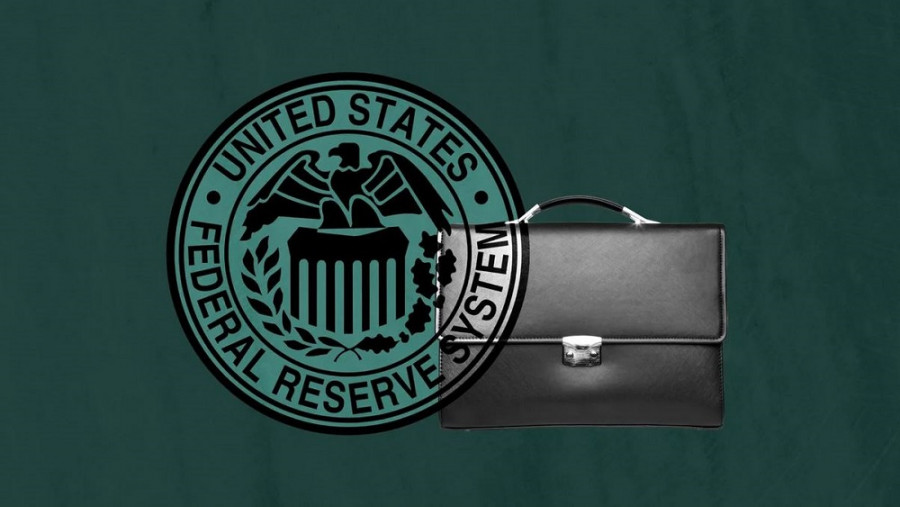The EUR/USD pair closed the past trading week at 1.0853, marking a "neutral territory." The bulls failed to settle within the 9-figure range, despite their attempts (the weekly high was recorded at 1.0933). On the other hand, the bears could not below the support level at 1.0850 (the weekly low was 1.0818). As a result, both sides gave in, ending the week in the middle of the 8-figure range. Formally, this round ended in favor of sellers, as last Monday's trading opened at 1.0894. However, there is no progress. We can not say that a downtrend is in progress (let alone an uptrend) while the price fluctuates in the range of 1.0820-1.0930.

However, the calm will soon turn into a storm. There are plenty of events for the upcoming week. As a result, the pair will either be above the 1.1000 mark or around 6-7 figures.
Fed Meeting
On January 31, which is Wednesday, we will learn the results of the Federal Reserve's first meeting this year.
There is one question that market participants are waiting to hear the answer to. And this question is as follows: "March or May-June?" According to the CME FedWatch Tool, the probability of a 25 basis point rate cut at the March meeting is 46%. The probability of a rate cut to 5.25% in May is 51%, and to 5.0% - 36%.
In other words, the market assesses the probability of the first step towards the rate cut cycle in March as 50/50, and practically has little doubt that the rate will shift towards a cut in May or June. The Fed may adjust these assumptions, strengthening or weakening the dovish sentiment. In my opinion, the U.S. central bank will definitively quash the bulls' hopes for a rate cut in March, considering the previous statements by Fed members, the rise in the Consumer Price Index, average wage levels, the growth of U.S. GDP in the fourth quarter, and the increase in maritime transport costs amid the challenging situation in the Red Sea.
In particular, Christopher Waller, a member of the Board of Governors, stated that the Fed needs to ensure that inflation is decreasing on a sustainable basis before starting to ease the monetary policy. His colleague, the head of the Federal Reserve Bank of Atlanta, Raphael Bostic (with voting rights this year), also mentioned that he is willing to change the forecast for the timing of rate cuts, as the decline in inflation to the central bank's target is likely to slow down in the coming months. A similar position was also voiced by the head of the Federal Reserve Bank of Cleveland, Loretta Mester.
Eurozone inflation
On Thursday, February 1, we will learn the preliminary estimate of inflation in the eurozone. According to forecasts, the CPI will fall to 2.7% in January. It is important to note that this indicator has shown a consistent downward trend for 7 months (from May to November inclusive), reaching 2.4% year-on-year. However, in December, it unexpectedly accelerated to 2.9%. If, contrary to predictions, the CPI accelerates once again, the euro will receive strong support, as the European Central Bank has effectively tied the fate of interest rates to inflation. According to ECB President Christine Lagarde, the central bank will make decisions based on incoming data, primarily in the field of inflation.
The Core CPI is expected to reach 3.2%, marking the slowest growth rate since April 2022. A downward trend has been observed for 5 consecutive months (January is expected to be the sixth month in this series). If, against expectations, the core CPI accelerates, the euro will receive additional (and quite substantial!) support.
Nonfarm Payrolls
On Friday, February 2, the United States will release key labor market data. Preliminary forecasts are quite weak. The unemployment rate in January is expected to slightly increase (to 3.8%) after remaining at 3.7% in December. The number of nonfarm payrolls is expected to grow by 177,000 (after an increase of 216,000 in December). The average hourly earnings indicator is expected to increase by 4.1% (a similar increase was recorded in December).
The aforementioned fundamental factors favor maintaining the status quo not only in the January but also in the March meeting. However, the central bank will likely leave the door open for a rate cut in subsequent meetings (May-June). But considering the fact that traders primarily react to more immediate events, we can assume that the results of the Fed's meeting will work in favor of the U.S. currency.
I would like to remind you that the December Nonfarm Payrolls surprised market participants, as all components of the report came out in the "green," reflecting the ongoing tension in the labor market. We can assume that the January figures will support the greenback, especially if the "wage" indicator again proves to be stronger than expected.
Conclusions
The upcoming week will revolve around the Fed meeting, eurozone inflation, and Nonfarm Payrolls. These three pillars will help traders determine the direction of price movement (sustainable movement, not just fluctuation from side to side).
Undoubtedly, other equally important reports will be published during the upcoming week. For instance, on Tuesday, we will learn the preliminary estimate of eurozone GDP in the fourth quarter and the U.S. Consumer Confidence Index; on Wednesday, the Manufacturing PMI in China and inflation data in Germany; on Thursday, the U.S. ISM Manufacturing Index; on Friday, the Consumer Sentiment Index from the University of Michigan.
Each of these reports is certainly important, but the mentioned "pillars" will play a decisive role in the mid-term fate of EUR/USD.
The material has been provided by InstaForex Company - www.instaforex.comfrom Forex analysis review https://ift.tt/U7fQICq
via IFTTT
